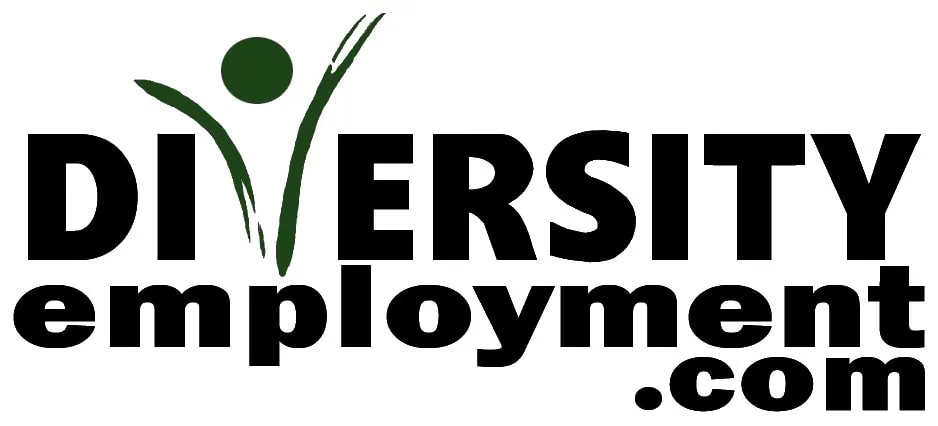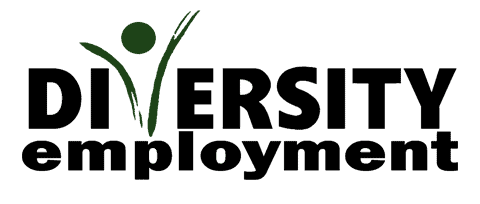
By The Diversity Employment Team - Published on: April 26, 2024
A Guide to Inclusive and Supportive Opportunities
Table of Contents
ToggleIntroduction
Welcome to the beginning of your journey towards finding opportunities for inclusion. Whether you’re stepping into the job market for the first time or looking to pivot into a role that celebrates diversity, this guide is for you. With the workforce becoming more varied daily, knowing how to find and thrive in inclusive job opportunities that respect and value your unique contributions is essential. We’ll cover everything from understanding the landscape of inclusive job opportunities to how to find companies that lead the way in diversity employment strategies. We’ll also provide essential tips on identifying supportive work environments and accessible career paths. We aim to equip you with the knowledge and tools to navigate the job market confidently.
This guide is not just about finding a job. It’s about finding a place to grow, contribute, and feel valued. It’s about discovering environments where diversity isn’t just tolerated but celebrated. So, join us as we look into the nuances of inclusive employment and take the first step towards securing a fulfilling career in a workplace where you truly belong.
Understanding Opportunities for Inclusion
The workforce is changing quickly, and nowadays, inclusion is not just a trendy term that people use, but it has become an essential aspect. Opportunities for inclusion mean creating environments where everyone can thrive regardless of their background. This inclusion spans all workplace aspects, from hiring practices to daily operations.
So, why focus on opportunities for inclusion? Simply put, diverse teams perform better. They bring various perspectives that can solve problems more creatively and drive innovation. Plus, inclusive workplaces are more appealing to a broader audience, helping companies attract top talent from all walks of life.
But achieving inclusion isn’t accidental. It requires thoughtful strategies and actions. Employers are increasingly recognizing this. Many adopt diverse employment strategies to ensure their teams are as diverse and inclusive as possible. Some steps include:
- Implementing bias-free recruiting practices
- Offering training programs on diversity and inclusion
- Creating employee resource groups for underrepresented employees
Various federal initiatives and frameworks support the movement towards more diverse and inclusive workplaces to reduce barriers to employment for historically marginalized groups. For instance, the Equal Employment Opportunity Commission (EEOC) in the U.S. enforces laws that make it illegal to discriminate against a job applicant or an employee because of the person’s race, color, religion, sex (including pregnancy, transgender status, and sexual orientation), national origin, age (40 or older), disability or genetic information.
Creating opportunities for inclusion isn’t just about doing the right thing; it’s about doing the smart thing for business. By leveraging the power of diversity, companies can unlock their full potential and create a supportive and productive work environment.
Spotlight on Inclusive Job Opportunities
Inclusive job opportunities are vital in building a diverse and vibrant workforce. These opportunities reflect roles and workplaces that actively welcome individuals from varied backgrounds, experiences, and perspectives. Moreover, recognizing such inclusive job opportunities is essential for job seekers who value diversity and wish to contribute to a culture of inclusivity.
Firstly, it’s important to understand what makes a job opportunity inclusive:
- Companies with clear diversity and inclusion policies
- Roles that require or value multicultural competencies
- Workplaces that offer equity in advancement
For those starting their career journey, entry-level positions can serve as a gateway to understanding and participating in inclusive corporate cultures. Organizations that actively engage in diversity employment strategies often post them, signaling their commitment to creating supportive work environments right from the start. Additionally, sectors historically lacking diversity are now at the forefront of offering inclusive job opportunities. Industries like technology, finance, and biotech are not just looking for candidates with specific skill sets but also for those who bring diverse perspectives and can contribute to a more inclusive workplace culture.
So, for job seekers, exploring these opportunities isn’t just about finding a job. It’s about aligning personal values with professional aspirations and contributing to a workplace where diversity is celebrated. Remember, inclusive job opportunities are a chance for individual growth and a step towards a more equitable society.
The Importance of Supportive Work Environments
Supportive work environments play a crucial role in enhancing opportunities for inclusion. In such settings, all employees feel valued and empowered. This is not only beneficial for individuals but also boosts the company’s overall productivity and morale. So, what makes a work environment supportive?
Key Features of Supportive Work Environments
- Open communication channels
- Recognition of individual contributions
- Access to professional development resources
Furthermore, supportive work environments encourage collaboration. Here, diversity is seen as a strength. Teams work better together, blending ideas from various backgrounds. As a result, innovation flourishes. These environments also prioritize mental and physical well-being, and flexible work arrangements, like remote jobs, to help employees manage work-life balance. This is especially crucial in today’s fast-paced world. Companies that offer supportive work environments often have clear policies against discrimination and harassment. They ensure that everyone, regardless of their identity, can work without fear of bias or retaliation. These workplaces set the standard for others, showing the benefits of inclusivity.
A genuinely supportive work environment doesn’t happen overnight. It requires ongoing effort from both employers and employees. Yet, the positive impact it creates is worth every step. Such workplaces not only attract but also retain top talent, driving success. So, as we seek opportunities for inclusion, let’s also strive to create and nurture supportive work environments.
Exploring Diversity Employment Strategies
Embracing diversity employment strategies is essential for creating opportunities for inclusion. These strategies help businesses attract a wide range of talents and foster an environment where everyone can succeed. But what are these strategies, and how do they work? Let’s delve in.
Effective Diversity Employment Strategies
- Develop inclusive job descriptions: Crafting inclusive job descriptions is a game-changer. This means using language to encourage all to apply, especially those who might otherwise feel excluded.
- Utilize diverse recruitment channels: Many Job Sites cater specifically to diverse candidates. Also, reaching out through diverse recruitment channels ensures a broader pool of applicants. This might include job fairs at historically black colleges and universities (HBCUs) or partnerships with LGBTQ+ organizations.
- Offer internships and mentorship programs for underrepresented groups: The power of internships and mentorship programs cannot be understated. These provide valuable experience and build a pipeline of diverse talent. For instance, automotive jobs can appeal to candidates from various backgrounds through targeted internships, and encouraging Employee Resource Groups (ERGs) is a great start.
Implementing these strategies requires commitment. Yet, the rewards are vast. Businesses become more innovative and reflective of the society they serve. Plus, they gain a competitive edge in an increasingly global marketplace. Measuring and adapting are crucial for those leading the charge in diverse strategies. Tools and surveys can track progress, ensuring that strategy exists on paper and makes a real difference. Diversity employment strategies are not just about filling quotas. They’re about creating a workspace where every individual can thrive. As we explore and implement these strategies, we move toward more inclusive and prosperous organizations.
Accessible Career Paths for Everyone
Creating accessible career paths is vital for actual opportunities for inclusion. This means ensuring that everyone, including those with disabilities, can find and thrive in jobs that match their skills and passions. Here’s how we can make it happen.
Making Careers More Accessible
- Implementing reasonable accommodations
- Enhancing accessibility in the hiring process
- Offering flexible work options
Reasonable accommodations are essential. These could include adaptive equipment or modified schedules. Employers must understand and respect these needs, as outlined by the Americans with Disabilities Act. The hiring process itself needs to be accessible, including everything from job postings to interviews. For example, ensuring job postings are screen-reader-friendly can make a big difference. Similarly, offering interviews via video call can help those with mobility challenges. Flexible work options, such as telecommuting, benefit everyone. They are especially crucial for those facing daily commuting to an office. Recognizing the value of workplace flexibility is a step forward in creating inclusive opportunities.
Last but not least, education and awareness play significant roles. Employers and co-workers should know different abilities and how to support them. Resources from organizations dedicated to learning and attention issues, like the National Center for Learning Disabilities (NCLD), can provide valuable guidance. Accessible career paths are not just about compliance. They’re about ensuring everyone has a fair shot at success. By taking action, we can open doors to meaningful and rewarding careers for all, furthering opportunities for inclusion.
How to Find Jobs That Value Inclusion
Finding jobs that value inclusion is crucial for anyone seeking a workplace where diversity is celebrated. Here are practical tips to guide your search.
Tips for Finding Inclusive Employers
- Research company cultures: Company websites and social media can offer insights into their culture. Also, read reviews on sites like Glassdoor to see what current and former employees say about inclusion.
- Look for diversity in leadership: A diverse leadership often indicates a commitment to fostering an inclusive environment. Companies that lack diversity at the top may not prioritize it throughout the organization.
- Explore companies’ diversity initiatives: Many organizations now openly discuss their efforts toward creating inclusive job opportunities on their websites. This can include everything from mentorship programs to partnerships with diversity-focused organizations.
Networking also helps. Attending industry events or joining professional groups can connect you with companies that value inclusion. Plus, firsthand accounts from employees can offer invaluable insights. Always trust your instincts during the job search, interviews and interactions with potential employers can reveal a lot about their stance on inclusion. Questions about diversity and inclusion policies can also highlight how seriously a company takes these efforts.
Finding jobs that value inclusion requires a bit of legwork, but it’s worth it. Landing a role with an employer that embraces diversity leads to more fulfilling and enriching career opportunities.
Highlighting Success Stories in Inclusion
Success stories in inclusion demonstrate the powerful impact of diversity in enhancing workplaces, driving innovation, and boosting employee satisfaction across industries.
Inclusive Workplaces Making a Difference
-
SingPost’s Commitment to Inclusion Across Borders: At SingPost, led by Group Chief People Officer Sehr Ahmed, the diversity of thought fostered by employees from different backgrounds and cultures has been instrumental in enhancing business performance and decision-making. Their initiatives include a reverse mentoring program where younger employees guide senior leaders, promoting a dynamic knowledge exchange that champions inclusivity and diversity.
-
SAP’s Autism at Work Initiative: This initiative focuses on hiring employees on the autism spectrum, boasting a remarkable 90% retention rate. By tailoring recruitment and retention strategies to meet the unique needs of neurodiverse individuals, SAP not only enriches its workforce but also sets a high standard for inclusive employment practices.
-
Johnson Controls’ Leadership in Inclusion: At Johnson Controls, Vice President of Human Resources for Asia Pacific Lin Lin spearheads efforts to embed diversity and inclusion into the corporate culture. The company empowers employees through business resource groups and diversity programs, enhancing engagement and fostering a workplace where every individual feels they belong and can thrive.
These examples show the transformative impact of inclusive practices on companies, individuals, and communities. They show what is achievable when inclusivity is prioritized and demonstrate the profound and practical benefits of building diverse workplaces. Each story is a testament to the fact that prioritizing diversity and inclusion is not just the right thing to do—it’s also the smart thing to do.
By embracing these practices, more organizations can create environments where diversity is celebrated, leading to a more equitable and vibrant workforce. Remember, every step towards inclusion is a step towards a better future for all.
FAQ
What are inclusive job opportunities?
Inclusive job opportunities are roles in workplaces that actively welcome individuals from diverse backgrounds, experiences, and perspectives. These opportunities are crucial for building a workforce that reflects the community and fosters an environment where everyone can thrive.
How can job seekers identify supportive work environments?
Supportive work environments can be identified by their commitment to open communication, recognition of individual contributions, and provision of professional development resources. Job seekers should look for companies with clear anti-discrimination policies and those that offer flexible work arrangements to accommodate different needs.
What are effective diversity employment strategies?
Effective diversity employment strategies include developing inclusive job descriptions, utilizing diverse recruitment channels, and offering internships and mentorship programs to underrepresented groups. These strategies help attract a wide range of talents and promote an inclusive workplace culture.
How do accessible career paths benefit inclusion?
Accessible career paths ensure that everyone, including individuals with disabilities, can find and thrive in roles that match their skills and interests. Making careers accessible involves providing reasonable accommodations, enhancing hiring process accessibility, and offering flexible work options.
What can individuals do to foster an inclusive environment at work?
Individuals can foster an inclusive environment by respecting colleagues from diverse backgrounds, actively participating in diversity training programs, and supporting company diversity initiatives. Every small action contributes to building a more inclusive workplace.
How can companies measure the success of their diversity initiatives?
Companies can measure the success of their diversity initiatives by using tools and surveys to track employee satisfaction, retention rates, and the effectiveness of inclusion policies. Regular feedback from employees and adjusting strategies based on this feedback are also vital for ongoing improvement.
Why is diversity in leadership important for inclusion?
Diversity in leadership is crucial because it often reflects the company’s commitment to inclusion. A diverse leadership team brings varied perspectives to decision-making processes and policy development, fostering a more inclusive corporate culture.
How can job seekers assess a company’s commitment to diversity before applying?
Job seekers can assess a company’s commitment to diversity by examining their public diversity statements, the diversity of their leadership team, and their involvement in community initiatives. Additionally, reviewing employee testimonials on platforms like Glassdoor and reaching out to current or past employees through professional networks can provide insights into the company’s culture and diversity practices.
Conclusion
Opportunities for inclusion are both necessary and beneficial to the modern workplace. Inclusive job opportunities, supportive work environments, and diverse employment strategies are essential to a thriving, innovative, and equitable society. By emphasizing accessible career paths and celebrating success stories of inclusion, we encourage a more inclusive future.
Creating a diverse and inclusive workforce requires action from both employers and job seekers. For employers, it’s about making a conscious effort to foster an environment where everyone can thrive. For job seekers, it’s about finding workplaces that value your skills and embrace your unique experiences and identity. So, whether you’re searching for your next career opportunity or striving to make your workplace more inclusive, remember that your actions contribute to a more significant change. We invite all jobseekers to join Diversity Employment and upload your resume today! Employers, join our mission to create a more inclusive world, one job at a time!
Related Posts
Guide to Recognizing Signs You Will Get the Job After an Interview
Discover key signs you might get the job after an interview! Learn how to spot…
Applying for Remote Jobs: Working Successfully from Anywhere in the World
Search global jobs with our guide on global job applications. Get expert tips on networking,…














